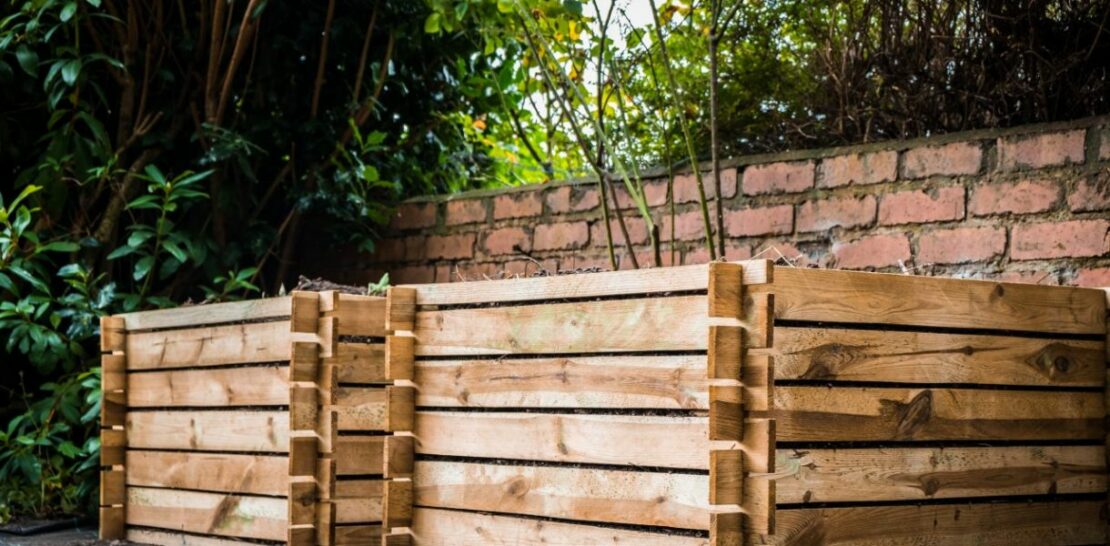Composting is an age-old practice that has gained immense popularity in recent times due to its numerous benefits for the environment and soil quality.
A well-maintained compost pile is a treasure trove of nutrients, providing an excellent natural fertilizer that promotes healthy plant growth and sustains the soil ecosystem.
However, getting started with composting can be a daunting task, especially for beginners.
This comprehensive guide will reveal six tips and tricks that will help you master the art of composting and achieve a flourishing garden while reducing your carbon footprint.
Read on to discover how to create the perfect compost pile and make the most of your kitchen and garden waste.
1. The Perfect Compost Recipe: Balancing Greens and Browns
One of the most critical aspects of composting is maintaining a proper balance between nitrogen-rich materials, commonly referred to as “greens,” and carbon-rich materials, known as “browns.” Understanding their roles in the composting process and achieving the right combination is essential for successful composting.
Greens are the primary source of nitrogen in your compost pile, and they mainly consist of kitchen scraps such as fruit and vegetable peels, coffee grounds, tea bags, and fresh grass clippings. Nitrogen promotes the growth of microorganisms responsible for breaking down the organic matter, thus accelerating the composting process. However, excessive nitrogen can lead to foul odors and a slimy texture, which is not ideal for a healthy compost pile.
On the other hand, browns are rich in carbon, and they provide the necessary energy for the microorganisms to thrive. Examples of brown materials include dried leaves, straw, wood chips, sawdust, and shredded paper. Browning helps maintain the balance in the compost pile by absorbing excess moisture and preventing unpleasant odors.
To achieve the perfect compost recipe, aim for a ratio of roughly 3:1 of browns to greens by volume. This ratio ensures an optimal decomposition rate and prevents any foul smells or an overly wet pile. However, this ratio is not set in stone, and it might require some adjustments depending on the specific materials used and local conditions. Pay close attention to the appearance, smell, and moisture level of your compost pile and adjust the ratio accordingly to ensure a thriving compost.
2. Aeration: The Key to a Healthy Compost Pile
Proper aeration is essential for the efficient decomposition of organic matter in your compost pile. Oxygen is vital for aerobic bacteria and other microorganisms responsible for breaking down the materials in your heap. A well-aerated compost pile will decompose faster and produce less odor compared to a poorly aerated one. Here are some methods to ensure proper aeration in your compost pile:
- Turn your compost pile regularly: One of the simplest ways to aerate your compost pile is to turn it using a pitchfork or shovel. This process involves mixing and moving the materials in your pile to introduce fresh oxygen and promote even decomposition. Aim to turn your compost pile at least once every two weeks, or more frequently if you notice unpleasant odors or slow decomposition.
- Add bulky materials: Incorporating coarse, bulky materials such as wood chips, straw, or small branches into your compost pile can create air pockets and improve aeration. These materials maintain the structure of your pile and prevent it from becoming too compact, thus allowing oxygen to penetrate the heap.
- Use a compost aerator tool: Compost aerator tools, such as compost turners or corkscrew aerators, are specifically designed to help improve aeration in your compost pile. These tools can make the task of turning your compost pile more manageable and efficient.
3. Maintaining the Right Moisture Level
Another crucial factor for successful composting is maintaining the appropriate moisture level in your pile. Microorganisms require water to survive and carry out their decomposition activities, but too much water can lead to anaerobic conditions, resulting in foul smells and a slow breakdown process.
A well-hydrated compost pile should feel like a damp sponge, moist to the touch but not soaking wet. To maintain this ideal moisture level, consider the following tips:
- Water your compost pile: If you find that your compost pile is too dry, use a garden hose or watering can to add water to the pile. Be sure to mix the pile thoroughly after watering to distribute the moisture evenly and prevent excessive wet spots.
- Adjust your greenand brown ratio: If your compost pile is consistently too wet, try adding more brown materials to help absorb excess moisture and restore balance. Conversely, if your pile is too dry, incorporating more green materials can help increase the overall moisture content.
- Use a cover or lid: Depending on your composting setup, using a cover or lid can help maintain consistent moisture levels by protecting your pile from excessive rainfall or rapid evaporation. However, be cautious not to create a sealed environment, as this can hinder proper aeration and lead to anaerobic conditions.
- Monitor local weather conditions: Be mindful of the impact of local weather conditions on your compost pile’s moisture level. In areas with high rainfall or humidity, you may need to adjust your composting practices to ensure proper moisture control, such as using a cover or incorporating additional brown materials.
4. Sizing Matters: Optimal Compost Pile Dimensions
The size of your compost pile plays a significant role in its overall efficiency and decomposition rate. A properly sized compost pile can retain heat more effectively, which helps expedite the breakdown of organic matter and produces a higher quality end product. On the other hand, a pile that is too small or too large can lead to insufficient heat retention, slow decomposition, or even anaerobic conditions.
For optimal composting efficiency, aim to maintain a compost pile with dimensions of approximately 3 feet in width, 3 feet in length, and 3 feet in height (3’x3’x3′). This size provides an ideal balance between heat retention and aeration, allowing for rapid decomposition and a healthy microbial community. However, it is essential to note that these dimensions are not rigid and can be adjusted to accommodate the amount of organic waste you generate and the space available for composting.
If you are limited by space or the volume of waste materials, consider using a compost bin or tumbler designed for smaller-scale composting. These systems can effectively decompose waste materials in a more compact form, although they may require more frequent turning and monitoring to ensure optimal conditions are maintained.
5. Chop It Up: The Importance of Particle Size
The size of the materials in your compost pile can have a significant impact on the speed and efficiency of the decomposition process. Smaller particles provide a larger surface area for microorganisms to work on, thus accelerating the breakdown of organic matter. Additionally, smaller particles can help promote better aeration and moisture distribution throughout the pile. Here are some tips for managing particle size in your compost pile:
- Chop or shred kitchen scraps: Before adding fruit and vegetable peels, trimmings, and other kitchen waste to your compost pile, take a moment to chop or shred them into smaller pieces. This simple step can significantly improve the decomposition rate of your pile and reduce the chances of attracting pests.
- Break down yard waste: When adding yard waste such as leaves, grass clippings, or small branches to your compost pile, try to break them down into smaller pieces. Running over leaves with a lawn mower, for example, can create more manageable particles that will decompose more rapidly.
- Layer and mix materials: As you add materials to your compost pile, try to create layers of varying particle sizes and types. This strategy can help promote better aeration, moisture distribution, and microbial activity, leading to a more efficient and successful composting process.
6. Composting Do’s and Don’ts: What to Include and What to Avoid
While composting is a fantastic way to recycle organic waste materials and create nutrient-rich fertilizer, not all materials are suitable for inclusion in your compost pile. Some materials can introduce harmful pathogens or chemicals to your pile, while others may attract pests or create unpleasant odors. To ensure a healthy and successful composting process, follow these general guidelines:
- Do include: Fruit and vegetable scraps, coffee grounds, tea bags, eggshells, grass clippings, leaves, straw, wood chips, sawdust, and shredded paper.
- Don’t include: Meat, fish, dairy products, bones, fats, oils, grease, pet waste, diseased plants, pesticides-treated materials, glossy paper, and non-organic materials such as plastic, metal, or glass.
By following these six expert tips and tricks, you can unlock the secrets of successful composting and transform your kitchen and garden waste into a valuableresource for your plants and soil. Composting not only helps you create a more sustainable and eco-friendly garden but also contributes to a healthier planet by reducing the amount of waste that ends up in landfills. Remember to maintain the right balance of greens and browns, aerate your pile regularly, keep the moisture level in check, and be mindful of the size and types of materials you add to your compost heap. With patience, practice, and a little bit of experimentation, you will soon master the art of composting and reap the benefits of this incredible natural process.




